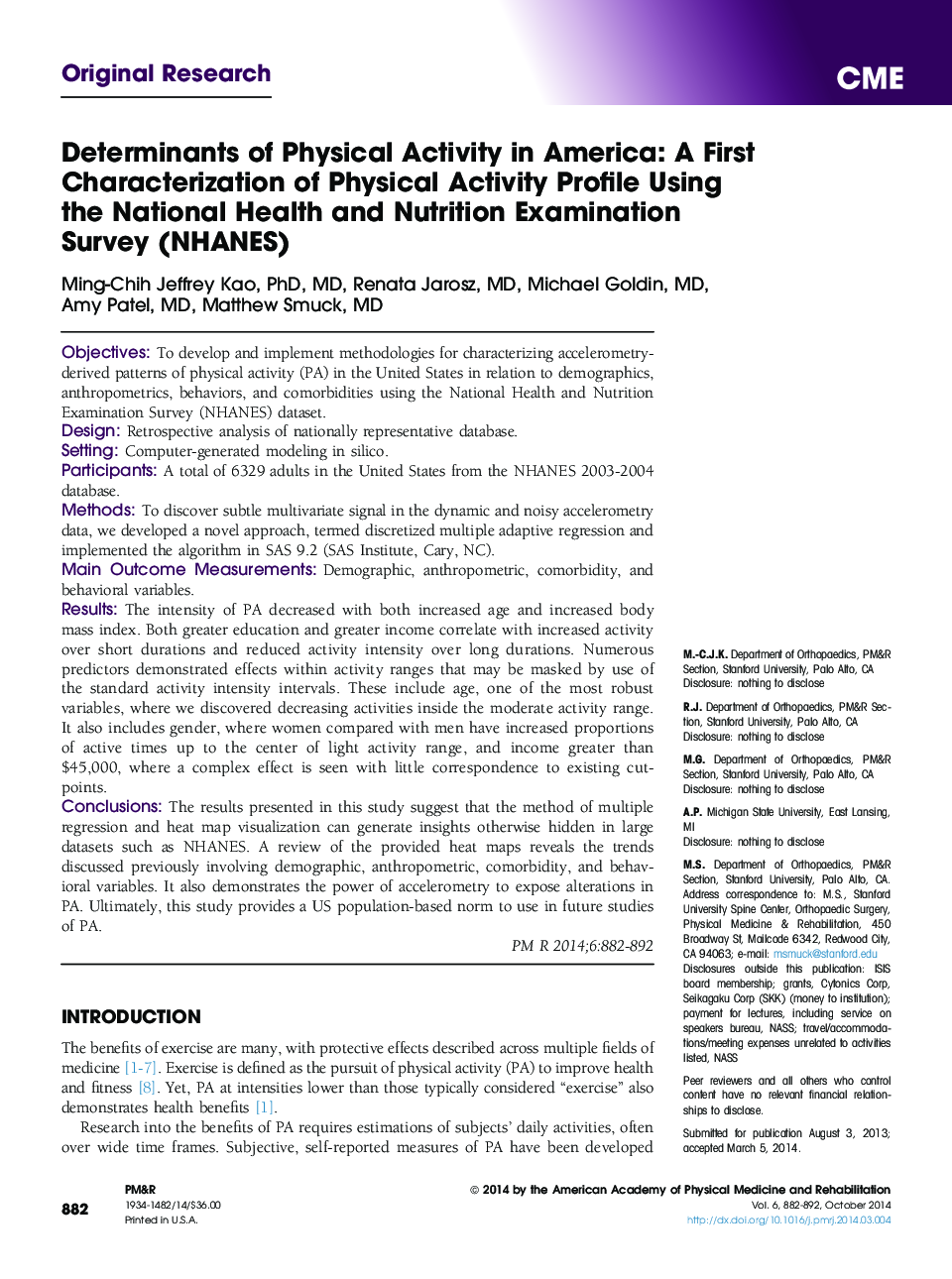| Article ID | Journal | Published Year | Pages | File Type |
|---|---|---|---|---|
| 2715750 | PM&R | 2014 | 11 Pages |
ObjectivesTo develop and implement methodologies for characterizing accelerometry-derived patterns of physical activity (PA) in the United States in relation to demographics, anthropometrics, behaviors, and comorbidities using the National Health and Nutrition Examination Survey (NHANES) dataset.DesignRetrospective analysis of nationally representative database.SettingComputer-generated modeling in silico.ParticipantsA total of 6329 adults in the United States from the NHANES 2003-2004 database.MethodsTo discover subtle multivariate signal in the dynamic and noisy accelerometry data, we developed a novel approach, termed discretized multiple adaptive regression and implemented the algorithm in SAS 9.2 (SAS Institute, Cary, NC).Main Outcome MeasurementsDemographic, anthropometric, comorbidity, and behavioral variables.ResultsThe intensity of PA decreased with both increased age and increased body mass index. Both greater education and greater income correlate with increased activity over short durations and reduced activity intensity over long durations. Numerous predictors demonstrated effects within activity ranges that may be masked by use of the standard activity intensity intervals. These include age, one of the most robust variables, where we discovered decreasing activities inside the moderate activity range. It also includes gender, where women compared with men have increased proportions of active times up to the center of light activity range, and income greater than $45,000, where a complex effect is seen with little correspondence to existing cut-points.ConclusionsThe results presented in this study suggest that the method of multiple regression and heat map visualization can generate insights otherwise hidden in large datasets such as NHANES. A review of the provided heat maps reveals the trends discussed previously involving demographic, anthropometric, comorbidity, and behavioral variables. It also demonstrates the power of accelerometry to expose alterations in PA. Ultimately, this study provides a US population-based norm to use in future studies of PA.
